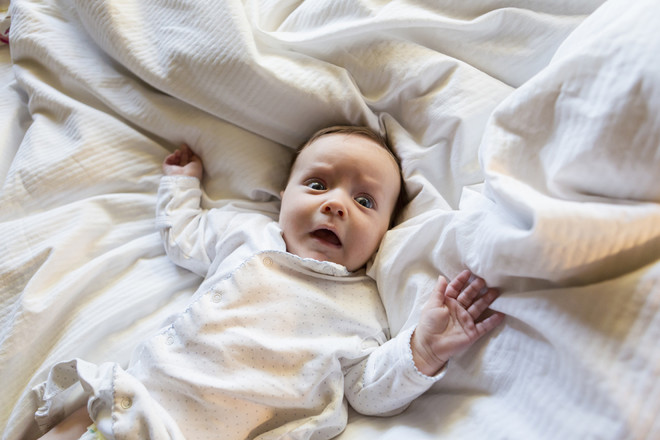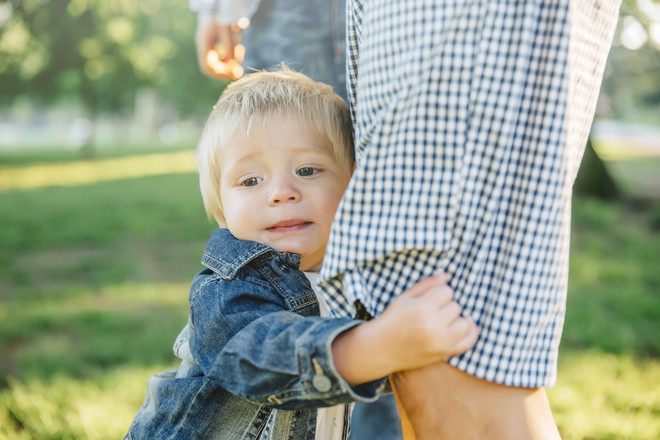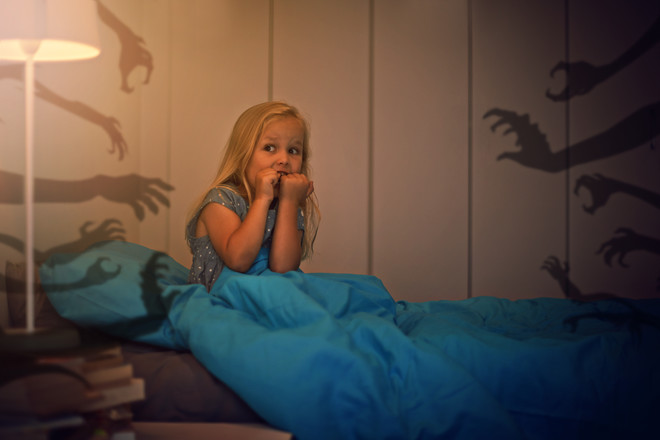We will show you how to recognize children's fear and defeat it. Photo: Getty Images
Photo: Getty Images
First Fear
A baby begins to be afraid even in the womb.The nervous shocks, anxiety and worries of a pregnant woman are transmitted to the baby through the umbilical cord and placenta. Remember, the calmer and more peaceful you are while carrying the baby, the more beneficial it will be for the future psychological state of the baby. Also, a stressful pregnancy and childbirth can affect the child's predisposition to fears.
The main thing - my mother is near
For harmonious and comfortable developmentA newborn should be well-groomed, fed and clean. But, of course, this is not enough for the baby's calm state of mind. A caring, cozy mother nearby is what primarily protects the baby from a sense of danger and anxiety.
Who are you, stranger?
 A photo: Getty ImagesMore than a year, children may have their first conscious fear. Usually it occurs in front of strangers. New people, different from their mother and father, can bring the child to tears. To get acquainted with a previously unknown kid the person was painless, it is better to do this without letting the baby out of the hands. After all, it is the mother who is the guarantor of security in front of such an interesting and vast world. Try to show the kid that his new friend is not at all dangerous: in front of an agitated kid you can hug or kiss him.
A photo: Getty ImagesMore than a year, children may have their first conscious fear. Usually it occurs in front of strangers. New people, different from their mother and father, can bring the child to tears. To get acquainted with a previously unknown kid the person was painless, it is better to do this without letting the baby out of the hands. After all, it is the mother who is the guarantor of security in front of such an interesting and vast world. Try to show the kid that his new friend is not at all dangerous: in front of an agitated kid you can hug or kiss him.
Ah, it hurts! Ah, I'm afraid!
After a year, children begin to fear pain, especiallyOften this happens after visiting a clinic or hospital. Shots, vaccinations, unpleasant medical procedures will not please anyone, especially a child's fragile psyche. Therefore, when you and your baby go to donate blood again, tell him a story about a mosquito that pricks him a little. If you still fall into a stupor, hearing the scream of your beloved, call the medical staff for help - they usually have a million ways to calm the child.
Monster under the bed!
 A photo: Getty Images In the period from one to three years can begin to attack the fear of darkness and sleep alone. And in this there is nothing reprehensible. Even an adult often feels uncomfortable in a dark place, which is a child, for whom darkness is uncertainty, danger, unpredictability. Buy a kid a child's night light, lie down next to him, sing a lullaby or read a fairy tale - so he falls asleep more calmly. You can think up a crumb for a night mom substitute in the form of a new toy that will protect the child's sleep. Later, fear is added to this fear of fairy-tale characters. Monsters, ghosts and scary heroes of cartoons will certainly get out from under the bed and take the child to their eerie world. In this situation, it is certainly important to filter the information that the child receives per day. Carefully refer to the selection of cartoons and fairy tales. Very often the fear of a fictitious character is provoked by the parents themselves, starting to bully the child with Baba Yaga or someone like that. Do not exacerbate the situation, try not to loosen the psyche of your children with fabricated fears. And, in general, while the kid has not yet learned how to identify as fear, it is better not to use the words "fear", "fear", "scare" with him, his desire to be afraid.
A photo: Getty Images In the period from one to three years can begin to attack the fear of darkness and sleep alone. And in this there is nothing reprehensible. Even an adult often feels uncomfortable in a dark place, which is a child, for whom darkness is uncertainty, danger, unpredictability. Buy a kid a child's night light, lie down next to him, sing a lullaby or read a fairy tale - so he falls asleep more calmly. You can think up a crumb for a night mom substitute in the form of a new toy that will protect the child's sleep. Later, fear is added to this fear of fairy-tale characters. Monsters, ghosts and scary heroes of cartoons will certainly get out from under the bed and take the child to their eerie world. In this situation, it is certainly important to filter the information that the child receives per day. Carefully refer to the selection of cartoons and fairy tales. Very often the fear of a fictitious character is provoked by the parents themselves, starting to bully the child with Baba Yaga or someone like that. Do not exacerbate the situation, try not to loosen the psyche of your children with fabricated fears. And, in general, while the kid has not yet learned how to identify as fear, it is better not to use the words "fear", "fear", "scare" with him, his desire to be afraid.
How to save the baby from fears
It's worth talking to your child about fearsstart after three years, when he can clearly explain to you what scares him. Talk through the situation, share your childhood fears with your baby and drive it away together. There are many playful ways to cope with fear. You can draw it, mold it, burn it, having previously described it on paper, even send it far, far away, putting it on a boat and sending it down the stream. You can come up with anything, the main thing is that the baby sincerely believes that he has said goodbye to fear forever. Every child goes through age-related fears, and a warm, comfortable family atmosphere is the most effective method of coping with them and helping the child become a self-confident, successful and self-sufficient person.









